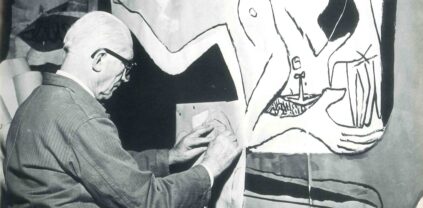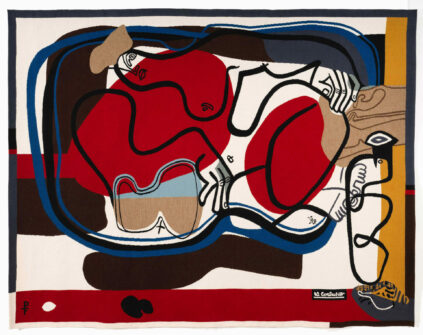Le Corbusier
Artwork
Biography
Le Corbusier: Visionary Architect and Creator of Aubusson Tapestries
Who is Le Corbusier?
Le Corbusier, whose real name was Charles-Édouard Jeanneret-Gris (1887-1965), was one of the most influential architects of the 20th century. Renowned for his innovations in modern architecture, Le Corbusier also left his mark on art history with his contributions in various fields, including tapestry. His avant-garde approach to design and his influence on urban planning make him a great master of modern art.
Collaboration with the Ateliers de Tapisserie d’Aubusson
Le Corbusier in France: A Period of Creation
In the 1930s, Le Corbusier spent time in France, where he had the opportunity to collaborate with the prestigious Aubusson tapestry workshops. Known for their excellence in fine art tapestries, the Aubusson workshops provided a platform for Le Corbusier to express his artistic ideas in textile form.
Creating modern tapestries
Le Corbusier worked with Aubusson weavers to create a series of modern tapestries that reflect his distinctive style. These tapestries integrate his architectural principles into textile works, combining geometry and minimalism to produce visually clean, harmonious pieces.
Le Corbusier’s tapestries are characterized by their innovative use of color and abstract forms. Works such as “Les huit ‘ and ’Nature morte” show how Le Corbusier adapted his architectural concepts into works of textile art, offering a new perspective on his aesthetic ideas.
The Impact of Collaboration
A New Vision of Modern Tapestry
Le Corbusier’s collaboration with the Aubusson workshops was a milestone in the evolution of modern tapestry. By translating his architectural ideas into tapestries, Le Corbusier broadened the horizons of textiles as an art form, integrating elements of modern design into an ancient craft tradition.
The tapestries resulting from this collaboration are today considered masterpieces of the 20th century, illustrating how Le Corbusier fused his architectural visions with traditional textile techniques.
A lasting legacy
Le Corbusier’s tapestries continue to influence the world of art and design. They are exhibited in museums and galleries around the world, where they are recognized for their unique contribution to modern art and their ability to capture the essence of Le Corbusier’s architectural ideas.
Discover Le Corbusier’s Tapestries
Explore our site to discover an exclusive selection of Le Corbusier tapestries created in collaboration with the Aubusson workshops. These exceptional works offer a rare opportunity to discover the link between modern architecture and textile art.
Visit our collection of modern tapestries to find out more about these fascinating pieces, and immerse yourself in the world of one of the greatest masters of twentieth-century art.


